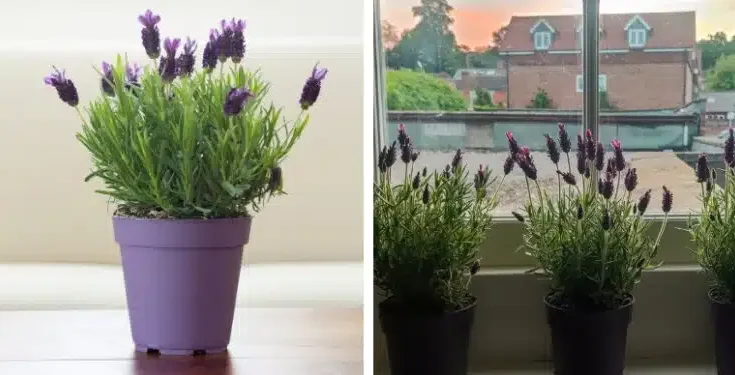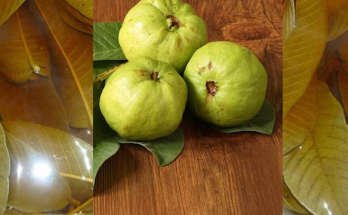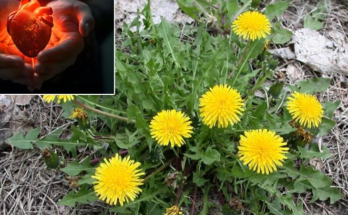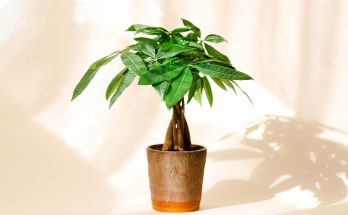Growing lavender indoors not only fills your living space with a delightful fragrance but also adds a touch of serenity to your home.
Lavender, known for its calming effects and versatile uses, can thrive inside with the proper care.
This detailed guide will walk you through the steps to grow lush lavender indoors in pots, ensuring your success with this beloved herb.
Choosing the Right Variety
The key to growing lavender indoors starts with selecting the right variety. Compact types such as Lavandula angustifolia ‘Munstead’ or ‘Hidcote,’ along with the French lavender (Lavandula stoechas), are more suitable for indoor cultivation. These varieties are smaller and adapt better to indoor conditions compared to their full-sized counterparts.
Container and Soil
Opt for a pot that is slightly larger than the plant’s root system, ensuring it has good drainage holes. Lavender prefers to be slightly root-bound, which helps to prevent overwatering. Terra cotta pots are ideal because they allow the soil to dry more evenly.
For soil, use a well-draining mix to mimic the sandy, somewhat gritty conditions lavender thrives in. Mixing regular potting soil with sand or perlite in a 2:1 ratio can create an ideal environment. Lavender prefers a neutral to slightly alkaline pH, so consider adding a small amount of lime if your mix is too acidic.
Sunlight and Location
Lavender demands lots of sunlight to flourish and produce its characteristic fragrance and blooms.
Place your pot in a south-facing window where the plant can receive at least 6-8 hours of direct sunlight daily. If you can’t provide enough natural light, supplement with grow lights to meet the plant’s needs.
Watering and Humidity
Overwatering is a common issue when growing lavender indoors. The plant prefers the soil to be on the drier side, so allow the top inch of soil to dry out before watering again.
Ensure the pot drains completely after watering to avoid soggy conditions, which can lead to root rot.
Lavender does well in environments with lower humidity, which typically matches indoor conditions, especially during winter months. Avoid placing it in overly humid rooms like kitchens or bathrooms.
Fertilizing
Lavender does not require heavy feeding. Too much fertilizer can promote leaf growth at the expense of blooms.
Apply a balanced, slow-release fertilizer sparingly in the spring as the plant starts its active growth. Avoid high-nitrogen fertilizers, which can decrease fragrance and flowering.
Pruning
To keep your lavender bushy and compact, regular pruning is necessary. Prune the plant lightly in early spring to shape it and encourage new growth.
After the lavender flowers, you can prune it again to remove spent blooms and shape the plant. This not only stimulates a second bloom but also prevents the plant from becoming leggy.
Temperature and Air Circulation
Lavender prefers cooler temperatures and good air circulation. Keep indoor temperatures between 60-70°F (15-21°C) during the day and cooler at night if possible.
Avoid placing the plant too close to heating vents or air conditioners, which can disrupt its growth. A ceiling fan or an oscillating fan on a low setting can improve air circulation around the plant.
Blooming
Inducing bloom indoors can be challenging due to lower light levels. However, providing ample light and a cooler period during winter (around 50-55°F or 10-13°C) can encourage flowering.
Some indoor gardeners find success by placing plants outside during the summer to benefit from natural light and temperatures, then bringing them back indoors before the first frost.
Conclusion
Growing lavender indoors requires attention to detail, particularly regarding light, water, and soil conditions. By choosing the right variety, providing plenty of sunlight, and allowing the soil to dry out between waterings, you can successfully cultivate this fragrant herb inside your home.
Lavender not only brings beauty and aroma to your indoor garden but also offers a sense of calm and a touch of nature’s serenity to your living space.



